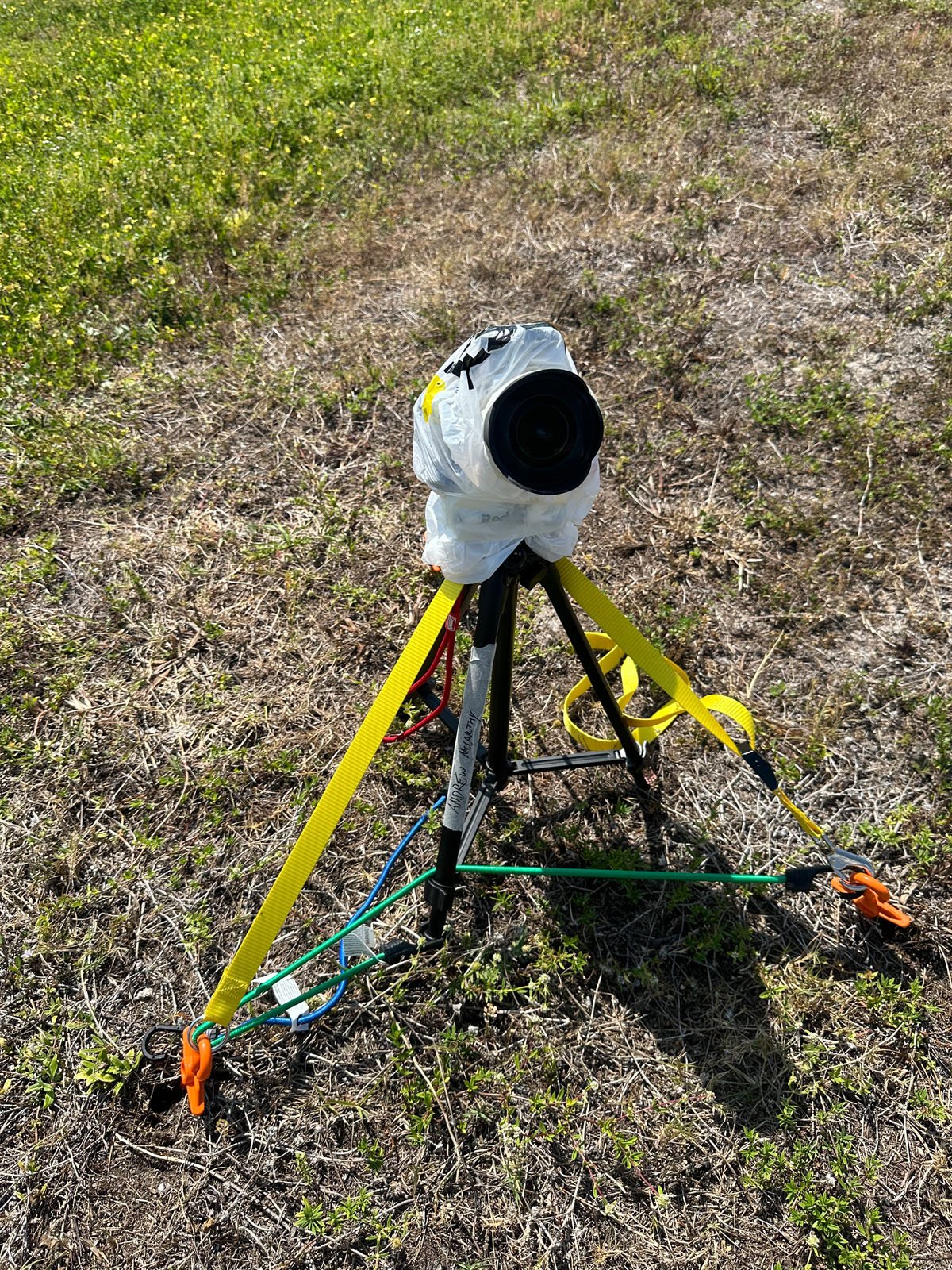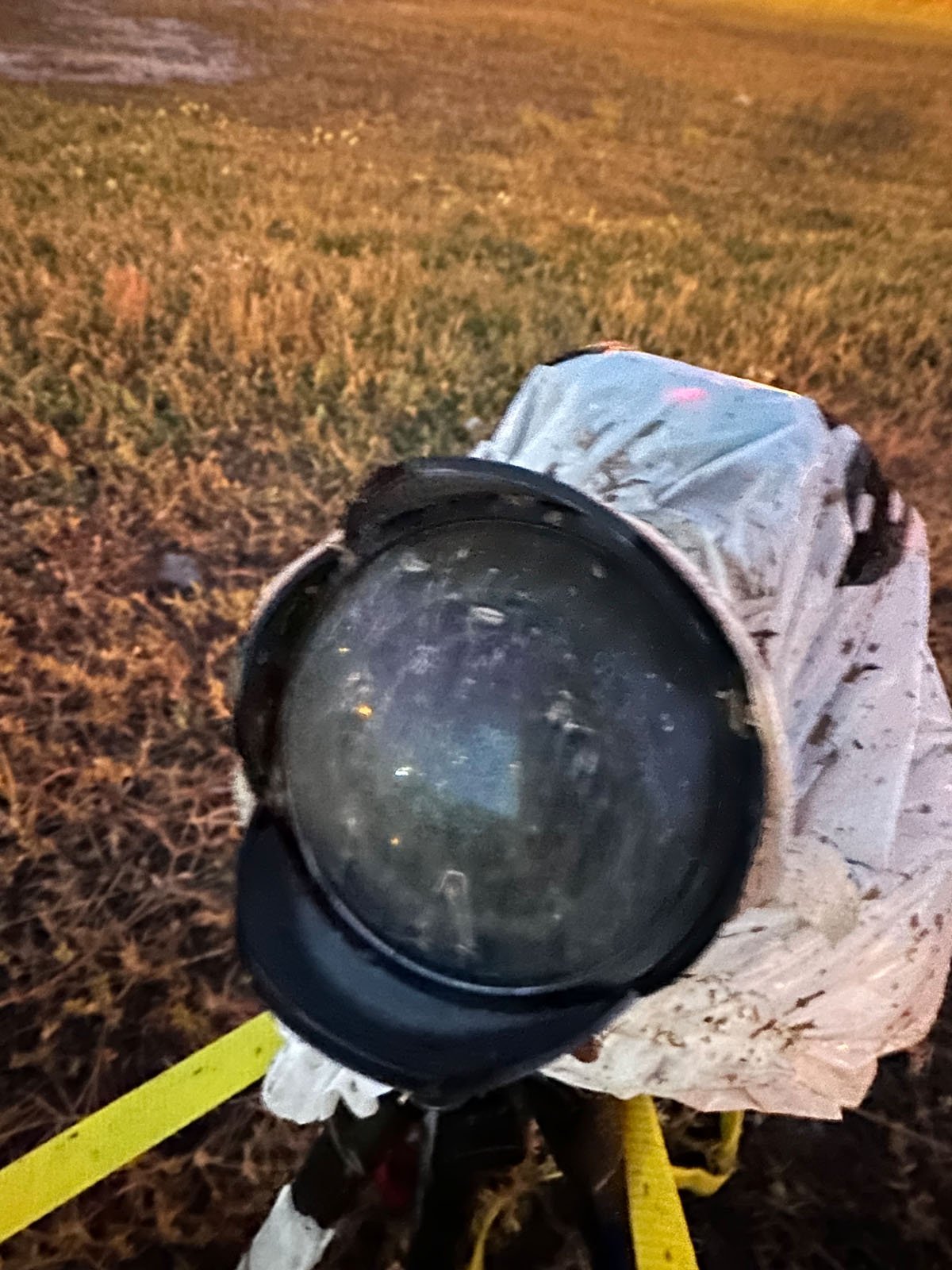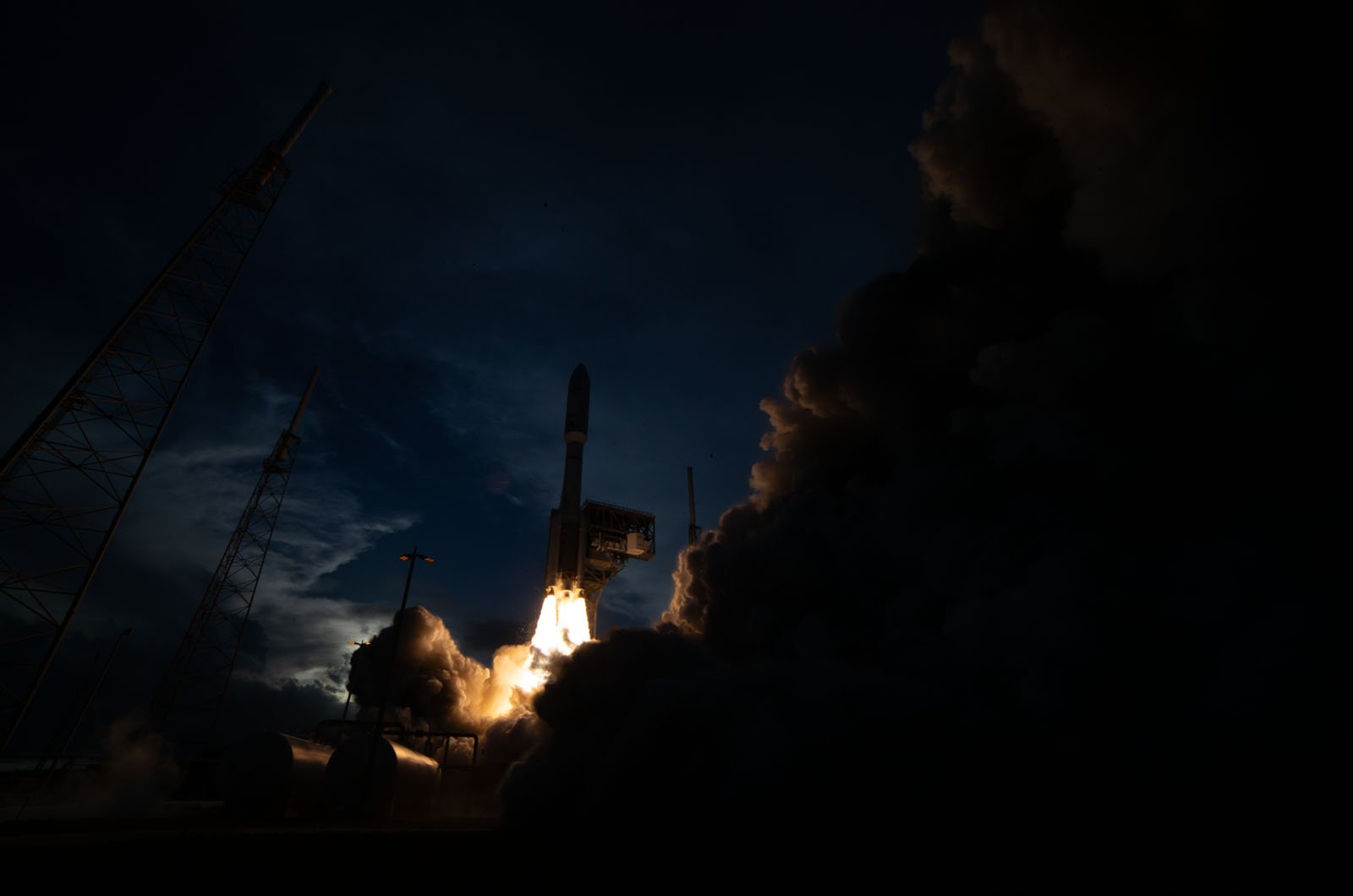Photographer’s Lens Destroyed Capturing Amazing Close-Up Rocket Launch Photo
![]()
Astrophotographer Andrew McCarthy, whose fantastic work PetaPixel has featured many times, recently captured an incredible photo of a rocket launch from right near the launchpad. McCarthy’s lens was destroyed in the process, but the resulting image looks well worth the steep price.
McCarthy set up his Sony a7 II and Rokinon 14mm lens in a restricted specialized area near the launchpad for the April 28 launch of the Project Kuiper (KA-01). The Atlas V 551 launched at 7:01 PM EDT from Cape Canaveral, lighting up the evening sky.
“To trigger the shot, I used a MiOPS+ set to listen for the sound of the engines starting,” McCarthy explains. “While the camera body was fine, albeit dirty, the lens was destroyed.”
“Unfortunately, for this type of shot, it’s not possible to protect the lens with any additional filters — like a UV or polarizing filter — so the optical element remains exposed to the hydrochloric acid that forms from the plume, which pits and destroys the lens.”

![]()
McCarthy set up his camera in the restricted area after getting permission from the Space Force and United Launch Alliance (ULA), which required extensive background checks. Before the launch, he drove into the area with an escort to set up his gear.

This Kuiper 1 launch was the first time McCarthy set up his cameras so close to a rocket, but he says “it won’t be my last.”
McCarthy shared one of his RAW files with PetaPixel, showing that he intentionally underexposed the images in camera to ensure that the extremely bright rocket plume would not entirely wash out the scene or blow out the sensor.

“To preserve dynamic range I shot in the lowest ISO and used a fast shutter speed, and since I was shooting in RAW I was able to bring back a lot of the shadows in Lightroom,” McCarthy tells PetaPixel. “The camera sensor I used was quite noisy with these settings, so I still have some experimentation to do before I’m fully satisfied with the results.”
![]()
![]()
![]()
He shot at ISO 100, 1/2000s shutter speed, and f/13 on his Rokinon 14mm prime lens. His lens certainly went out in a blaze of glory.
More of McCarthy’s work can be found on his Instagram, X, Facebook, and website.
Image credits: All photos by Andrew McCarthy.